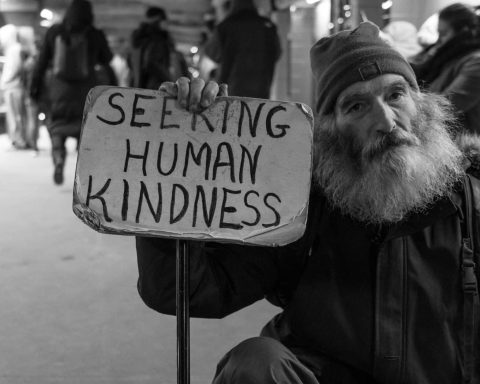 Sharon Dixon (pictured)is a GP partner in Oxford and NIHR Doctoral Research Fellow at the University of Oxford. She is a practice safeguarding lead.
Sharon Dixon (pictured)is a GP partner in Oxford and NIHR Doctoral Research Fellow at the University of Oxford. She is a practice safeguarding lead.
Bryony Kendall is a GP and a Named GP for NHS Cheshire and MerseysideAffiliation: NHS Cheshire and Merseyside
Jenny Driscoll is a Reader in Children’s Rights at kings College London, and former barrister specialising in care proceedings and multi-agency work.
Catherine Pope is Professor of Medical Sociology in the Nuffield Department of Primary Care Health Sciences, University of Oxford.
Multi-agency working is the cornerstone of effective child safeguarding. This is embodied throughout safeguarding processes, from a policy and strategic level where safeguarding partnerships hold oversight of child safeguarding planning to the front-line delivery of safeguarding care.1 It seeks to bring together professional perspectives and knowledge from across the different facets of families’ lives and interfaces with services, to provide a nuanced contextual understanding of the child within their family and social circumstances.
Multi-agency working can be complex; while the agencies and individuals involved typically share aims and goals about the safeguarding process, each has their own guidelines, practices, and processes.
The recently published national review2 into the tragic deaths of Star Hobson and Arthur Labinjo-Hughes identified serious failings in multi-agency child protection working and recommended the establishment of Multi-Agency Child Protection Units (MACPU). The review also calls for the development of evidence based national standards on what works when supporting children and families in multi-agency child safeguarding and advises that these are co-developed with input from relevant partner agencies. The recognition that there is a need to improve multi-agency working, and to create the knowledge and leadership needed to support that, is both timely and welcome.
Multi-agency working can be complex; while the agencies and individuals involved typically share aims and goals about the safeguarding process, each has their own guidelines, practices, and processes. This is further complicated by the different structures of different agencies3. Some are considered or treated as a ‘single entity’ under an umbrella heading, for example ‘education’ or ‘health’ and this may obscure significant differences and layers of complexity within their structures and teams. For example, ‘education’ for one family could include several schools or pre-school settings which each function as discrete relatively autonomous units. ‘Health’ can include health visiting, midwifery, primary and secondary care – all of whom may be bound by different work protocols, professional guidance and/or boundaries.
This makes multi-agency collaboration complicated and difficult.3 We know from child safeguarding practice reviews that the gaps in multi-agency processes are implicated in failings of child safeguarding processes, sometimes with devastating impacts.1 Bridging these gaps requires understanding how and when these gaps arise or are maintained.
While there are many commonalities between how agencies approach safeguarding, there are also differences in processes and a lack of a shared understanding of these can hinder cross agency and genuinely multi-professional working.4 Simply reiterating the need for inter-agency working without understanding and addressing points of concern and divergence is unlikely to resolve all potential difficulties. Differences in professional ‘culture’ have been identified as contributory factors for differences in safeguarding practice.5 We contend that a deeper understanding of safeguarding practices, and how these look and feel on the front-line of multi-agency encounters, is needed to mitigate against points of tension which hinder multi-agency working.
Information sharing is a powerful exemplar of how tensions between understanding and practice play out between agencies.5,6 Information sharing is at the heart of multi-agency working in safeguarding and it is frequently cited as a contributory factor when things go wrong.1,7 Information sharing in practice is not always a straightforward process, even within a single agency.7 Take for example ‘health’, where all medical practitioners are bound within the supportive framework of GMC guidance.8 Here we see that there can still be differences in information sharing experience and challenges. Primary care often holds the records for many family members. This is a strength of primary care’s contributions to safeguarding but can complicate processes of communication about what information needs to be shared and when or whether consent is needed. If there is immediate concern of significant harm, then this is relatively straightforward. However, situations are frequently more nuanced, requiring a shared understanding of processes and interpretations of consent. When a social worker asks the family for consent to approach general practice, what does that mean for the GP? As data guardians who know what is in the record, GPs may feel obliged to establish consent (unless consent is not needed) and this process can be uncertain. This can be especially complex when navigating decisions about whether and what they are allowed to share relating directly to the child but also about the wider family network implicated in a social worker’s request.
Knowing how and what to document about what has been shared adds another layer of complexity.9-11 as does negotiating dissent or dealing with concern from family members. Information sharing for safeguarding can be complex and can feel relatively unsupported. Shared processes need to be about more than simply shared words or vocabulary.3 We also need a shared understanding of what records comprise, of terminology and vocabulary and of how words and information are used and operationalised within different agencies.
These are timely and crucial issues to consider and explore in the context of proposed open access by default to general practice records later this year, including documents and free-text consultations.12 The initial proposed launch date for this was delayed because of concerns about safeguarding,13 but there is now a proposed roll out date for 1.11.2022.12 We believe that this could have profound impacts on both the actual and perceived sanctity of health records for safeguarding because of concerns including the safety and visibility of third-party information, and concerns for clinicians about writing down personal observations within the medical record. Personal observations often contribute crucial information for safeguarding, but in our experience, clinicians worry that these may be construed as judgemental or cause conflict or schisms in their relationships with patients. Harming these relationships (and the trust within them) is also arguably harmful for ongoing safeguarding care.
In our experience, there are few opportunities for multi-professional learning, or inter-agency peer support and education. Education is sometimes delivered didactically from one agency to another, including in multi-agency groups, but that is not necessarily the same as an opportunity for reciprocal learning and reflection. We suggest cross-agency support for multi-agency working could include multi-agency mentoring, shared learning sessions, and multi-agency peer support.
A silver lining of the rapid responses to the pandemic was that moving multi-agency meetings online facilitated GPs attendance, a valuable and valued contribution to multi-agency safeguarding…
A silver lining of the rapid responses to the pandemic was that moving multi-agency meetings online facilitated GPs attendance, a valuable and valued contribution to multi-agency safeguarding, noted by both social workers and GPs in research conducted independently in parallel, including by the authors of this piece.13-15 This should be recognised and nurtured, but we can learn more about online multi-agency working, including how to ensure safety and develop trust and rapport. Only by reflecting critically and together can we do this. Relationship building is at the heart of multi-agency working, and sharing stories and findings can be part of this. When research is primarily conducted and shared within single agency professional meetings and publications, opportunities to do this may be missed.4
We wholeheartedly support the recent review’s call for guidance that makes sense to each individual agency1 – both as they work in parallel and as they intersect and collaborate. We would like support for navigating the evolving interface of multi-agency working to be co-produced with front-line safeguarding workers that responds to real-world dilemmas and uncertainties, and which acknowledges rather than dismissing them.
We will develop multi-agency working by accounting for different cultures and working practices of individual agencies and recognising points of divergence as well as areas of cohesion. We need to understand and consider what processes and structural factors underpin potential challenges or barriers. We need to work collaboratively and collectively understand how to enhance the capacity and capabilities of multi-agency safeguarding teams, from frontline practice to strategic policy. Sharing learning, practice, and research between agencies should form part of this process.
1. Working Together to Safeguard Children A guide to inter-agency working to safeguard and promote the welfare of children
2. Child Protection in England, National review into the murders of Arthur LabinjoHughes and Star Hobson
3. Brandon, M., Sidebotham, P., Belderson, P., Cleaver, H., Dickens, J., Garstang, J., Harris, J., Sorenson, P., and Wate, R. 2020. Complexity and challenge: a triennial analysis of SCRs 2014-2017. Final report. Department for Education. https://seriouscasereviews.rip.org.uk/wp-content/uploads/TRIENNIAL_SCR_REPORT_2014_to_2017.pdf
4. Sheila Kitzinger project report: SKP@GTC in the times of COVID-19 | Green Templeton College (ox.ac.uk) (report under review, and will be published online this month, and available from S Dixon now)
5. Richardson S, Asthana S. Inter-agency information sharing in health and social care services: the role of professional culture. British Journal of Social Work. 2006 Jun 1;36(4):657-69.
6. Jahans‐Baynton K, Grealish A. Safeguarding communications between multiagency professionals when working with children and young people: A qualitative study. Journal of Child and Adolescent Psychiatric Nursing. 2021 Dec 16.
7. https://learning.nspcc.org.uk/case-reviews
8. Confidentiality: good practice in handling patient information, https://www.gmc-uk.org/ethical-guidance/ethical-guidance-for-doctors/confidentiality, accessed 18.6.22
9. Lees A. Facts with feelings–Social workers’ experiences of sharing information across team and agency borders to safeguard children. Child & Family Social Work. 2017 May;22(2):892-903.
10. Drinkwater J, Stanley N, Szilassy E, Larkins C, Hester M, Feder G. Juggling confidentiality and safety: a qualitative study of how general practice clinicians document domestic violence in families with children. British journal of general practice. 2017 Jun 1;67(659):e437-44.
11. Dixon S, Hinton L, Ziebland S. Supporting patients with female genital mutilation in primary care: a qualitative study exploring the perspectives of GPs’ working in England. British Journal of General Practice. 2020 Oct 1;70(699):e749-56.
12. Getting ready for patients to have access to their future data | NHS England and NHS Improvement Events accessed 22.6.22
13. Patient access to GP records via NHS App to be delayed amid ‘safeguarding’ concerns – Pulse Today accessed 22.6.22
14. Driscoll J, Lorek A, Kinnear E, Hutchinson A. Multi-agency safeguarding arrangements: overcoming the challenges of Covid-19 measures. Journal of Children’s Services. 2020 Nov 2.
15. Ferguson H, Kelly L, Pink S. Social work and child protection for a post-pandemic world: the re-making of practice during COVID-19 and its renewal beyond it. Journal of Social Work Practice. 2022 Jan 2;36(1):5-24.
16. Dixon S, Frost L, Feder G, Ziebland S, Pope C. Challenges of safeguarding via remote consulting during the COVID-19 pandemic.
Sharon Dixon and Catherine Pope’s safeguarding study was supported through Sue Ziebland and Catherine Pope’s National Institute for Health Research (NIHR) Senior Investigator awards. The multi-agency meeting was supported by the Sheila Kitzinger Programme (SKP@GTC in the times of COVID-19 | Green Templeton College (ox.ac.uk)). The views expressed are those of the author(s) and not necessarily those of the NIHR or the Department of Health and Social Care. Jenny Driscoll was principal investigator in a multi-agency study investigating child safeguarding and protection responses to the COVID-19 lockdown and social distancing measures, supported by King’s Together funding from King’s College London and ESRC Impact Accelerator Accounts. Dr Ann Lorek and Dr Aisha Hutchinson from King’s College London were Co-Investigators.
Featured image by krakenimages on Unsplash







[…] Read their full analysis, ‘Supporting the ‘Multi’ in Multi-agency working for child safeguarding’. […]